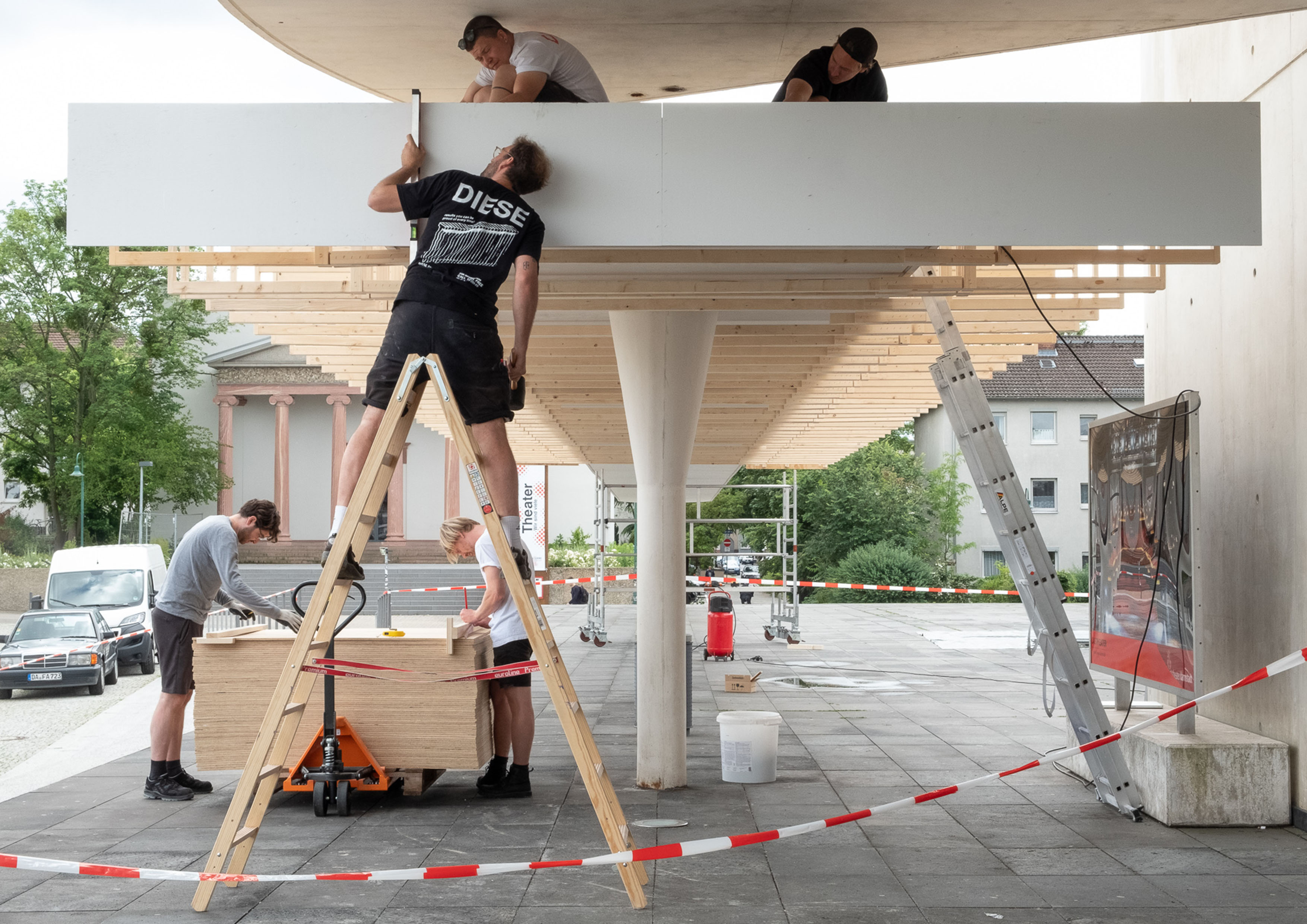BauWHAT?!
Multidisciplinary Experiment
Spring/Summer 2019 | @Staatstheater Darmstadt (GER)


In the spring and summer of 2019 I participated in a summer school initiated by DIESE Studio and Florian Walzel in cooperation with Staatstheater Darmstadt. This summer school set itself apart from other (design) summer schools as the participants where both partakers as well as the curators of said schools program.
DIESE Studio had implemented an open-ended experiment in order to find out, what a newly imagined design school would look like today. After a two month process, the school manifested itself as a 1:1 sketch model (1) of a school on the prominent square infront of the Staatstheater as part of a performing arts Bauhaus Festival.
During the experiment and research phase we established the core values of the school, the most important ones being self-efficacy and process-oriented working rather than product-oriented working. The first one was important to us due to the lack of willingness to act among our generation and the „someone should do something“ state of mind rather than trusting in the impact of your own actions. The second value stems from our belief that school should be a space to developing individual processes and methods that does not need (economic) pressure to produce finished products. School also needs room for failing as this initiates substainable self-learning.
This led to the second phase of putting our ideas and values to work. While one group focused on building the temporary school my group worked on filling the building with life and learning. My role became overseeing the concept and content development and paying attention to the group not drifting from our core values and overall goal. This also included developing a curriculum (2) and building a lesson plan. During this phase I learned how to keep myself and a team organized and on track, how to focus on what’s important rather than getting lost in details and how to use strong visual storytelling (3) in an architectural context.
The last phase consisted of enacting the live model on the theatre square for the public to see and interact. We held classes every day for two weeks. While the classes were designed for us, we were open for people to ask questions and discuss our methods.
(1) By building a 1:1 sketch model of our concept, we made a very conceptual project accessible to more people. Building a permanent building and developing a full curriculum was way beyond the feasibility within the very short time frame, so we decided to create a vivid sketch rather than writing a long, theoretical essay. This is also a great way to start a conversation about the topic.
(2) This is where my passion for design education comes from. I believe that design education has to be fluid in order to adapt to the role of design in the society.
(3) I believe that you can tell a story or create a strong image by using visual analogies to communicate, what you want to say. The difficulty is to find symbols and analogies that are universal but not trivial.





